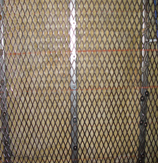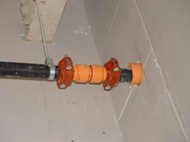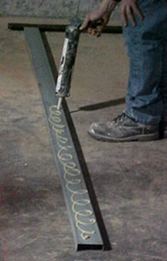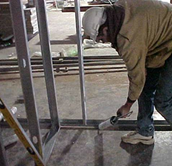ICD 705 Tech Spec Requirements For Type A, B, or C Wall?
- SPG Inc.
- Nov 8, 2019
- 3 min read
Updated: Mar 12
The ICD 705 Technical Specifications for Sensitive Compartmented Information Facilities (“Tech Specs”) depict three different wall types that are “suggested” for achieving compliance with acoustic and RF requirements for SCIF and SAPF space:

A common misperception is that only ONE of these wall types can be built, but this isn’t true. In fact, it’s a pretty good sign your project lacks expertise if your GC isn’t considering a plethora of factors that might internally and externally be affecting the design and rigidly adheres strictly to one of these wall systems exactly as it is depicted. This is because ICD 705 is a “performance” based document, not criteria based like its policy predecessors. The Tech Specs in this instance are outlining some “best practice” guidelines for building a type of wall that has generally been effective in achieving the type of results sought for protection of national security information, but there are a myriad number of factors that can change this dynamic. What if Security In-Depth (SID) isn’t sufficient for these types of walls? What if the wall is for a Modular Platform? What if the wall is “shared” with an adjoining SCIF/SAPF? Every SCIF and its location first require SID analysis on threat, risk and vulnerabilities prior to ascertaining a wall type that best fits ICD 705 policy.
One of the most critical factors is installation. Do you have an acoustical bead in all the right places during installation and was it a wet seal? Did you employ the correct methodologies for acoustic with blocking and insulation in your framing? Do you have the correct acoustic insulation and addressed all gaps, seams and cavities? Are all conduits and J-boxes out of your perimeter walls? Did you remember to alternate (Vertical/Horizontal) wall layers on the secure side? These and other factors are the kind of details that can’t be missed because a SCIF perimeter wall is more than just a wall…It’s an integrated wall system that performs a very specific function. Especially in the case of TEMPEST, one wrong piece of material installation can become the weak point for the functionality of the entire space.
Type A walls are actually pretty scarce with SCIF construction in commercial facilities but work well with the appropriate SID environment and AO approval. The most commonly constructed walls are Type B and Type C walls, but another common misperception out there is that Type B walls are the most robust. This isn’t true either and here is a comparison on the winner and loser:

Given all the factors of time, materials and potential injury, typically Type C walls prove to be a better cost choice
The wall systems are about more than just the layers…It’s what comprises the layers, how those layers are put together, the security in-depth environment in which the secure facility resides and many other extraneous factors such what kind of work will be performed in the space, equipment being used inside and outside the secure area, etc.
The perimeter is no less important than the walls to a castle and ensuring you have appropriately addressed the design of what that wall should be, and any/all countermeasures, penetrations and functionality is a key piece to the successful performance and accreditation of your space.
Understanding wall systems types and effective construction methodologies for achieving optimal solutions through value engineering is a specialty of SPG Inc. We will find the best policy compliant answers for ensuring your project remains on schedule and on budget. We are always available even if its just to chat about issues you may be having. Our focus is on your success, our long term goal is a partnership where we both thrive. This ensures the best possible outcome for the protection of National Security information environments.






Comments